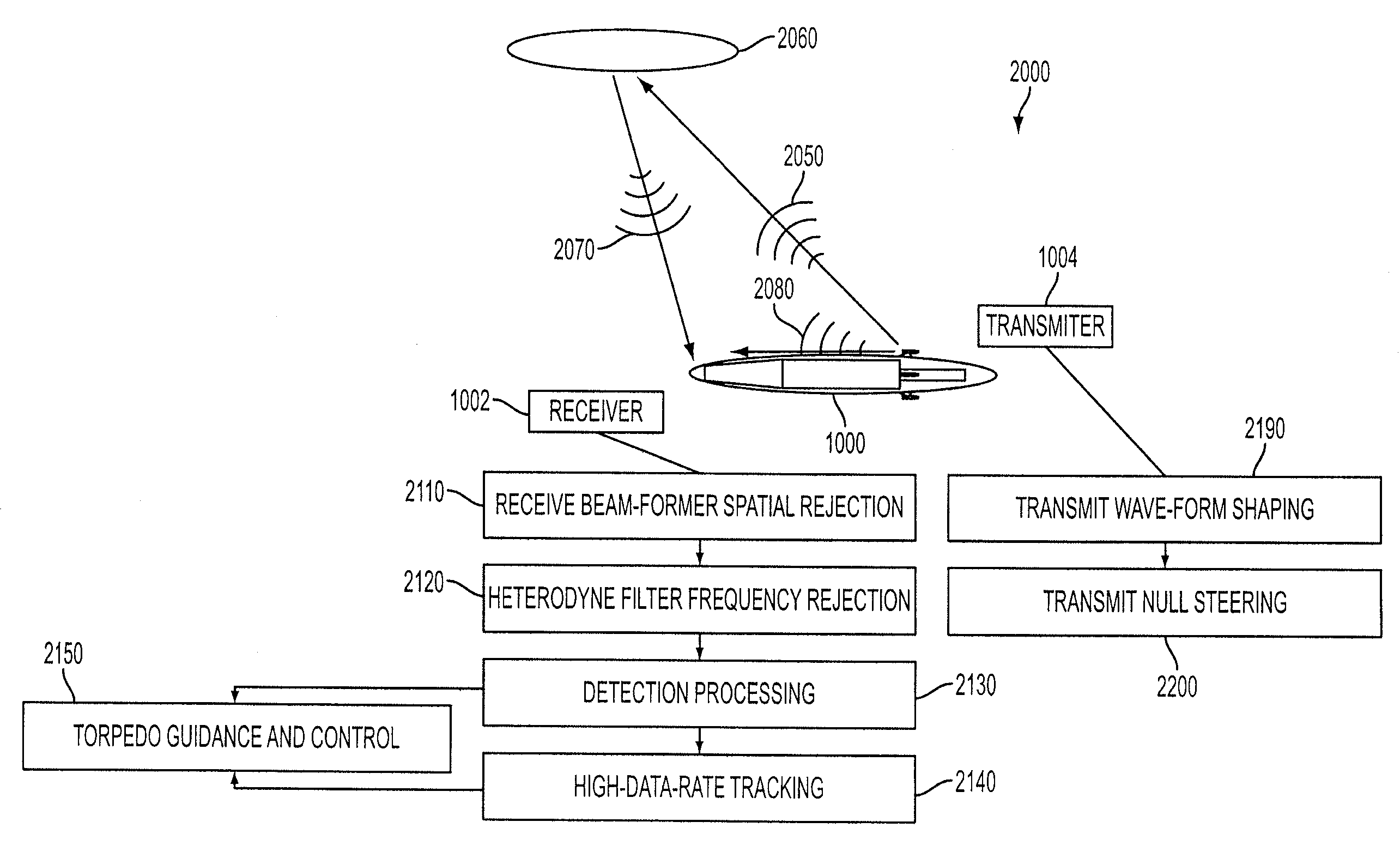Cavitating Body Sonar System and Process
- Summary
- Abstract
- Description
- Claims
- Application Information
AI Technical Summary
Benefits of technology
Problems solved by technology
Method used
Image
Examples
case b
[0063] In another exemplary embodiment of the invention, further advantages may be achieved including, in an exemplary embodiment, incorporating a transmitter system attached directly to the cavitating body. Another exemplary embodiment, may include a transmitter system located elsewhere in the water. For application to a supercavitating torpedo, such as, e.g., but not limited to, the increased aperture homing cavitator (IAHC) discussed above, according to an exemplary embodiment of the present invention, at least four options may exist, including the following options for locating the transmitter, as depicted in FIG. 7: [0064] Case A—mounted on the platform such as a submarine from which the supercavitating torpedo is launched; [0065] mounted on a device that is separate from the supercavitating torpedo, launched from the same launch platform; [0066] Case C—mounted on the cavitator, and simultaneously serving as the receive array; and, [0067] Case D—mounted elsewhere on the superca...
PUM
 Login to View More
Login to View More Abstract
Description
Claims
Application Information
 Login to View More
Login to View More - R&D
- Intellectual Property
- Life Sciences
- Materials
- Tech Scout
- Unparalleled Data Quality
- Higher Quality Content
- 60% Fewer Hallucinations
Browse by: Latest US Patents, China's latest patents, Technical Efficacy Thesaurus, Application Domain, Technology Topic, Popular Technical Reports.
© 2025 PatSnap. All rights reserved.Legal|Privacy policy|Modern Slavery Act Transparency Statement|Sitemap|About US| Contact US: help@patsnap.com



